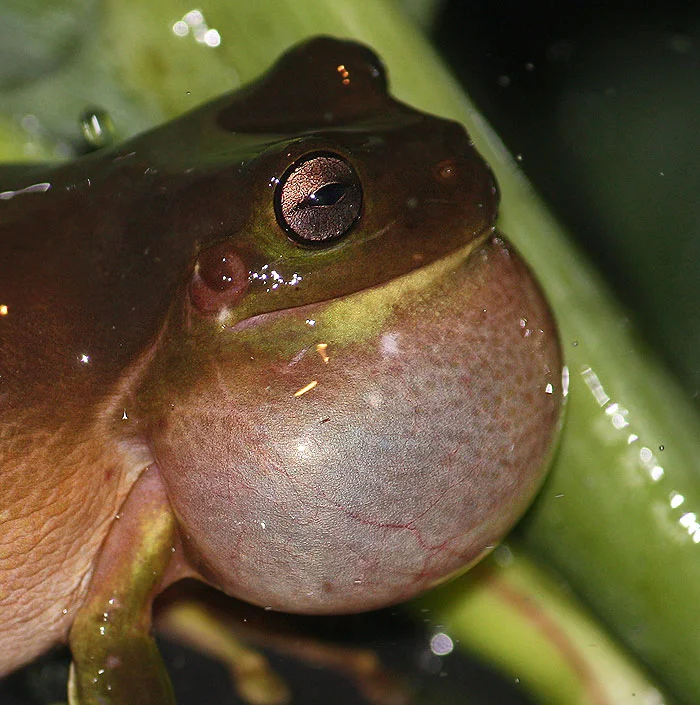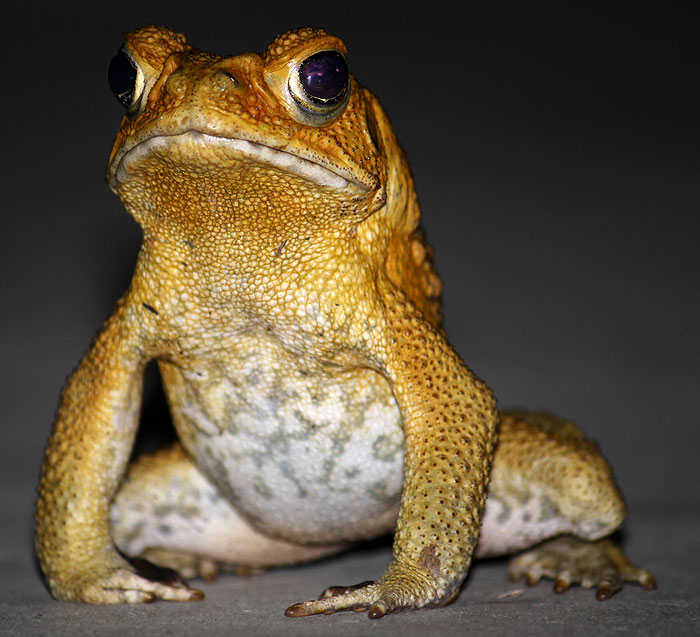Green Tree Frog (Litoria caerulea)
With all the beautiful monsoon rain we've been enjoying the frogs are havin a ball. And it's brilliant to see them in such a abundance and apparent good health.
Like I've mentioned before - we don't use herbicides or pesticides in the garden and it really does make a difference. Sure the garden can look a little unkempt from time to time and it is a bit more labour intensive to weed etc ... but what the hell, I tend to be a little unkempt myself eh?.
Anyway, back to our mate the 'Common' Green Tree Frog - one of the more interesting things about these guys is that their skin secretions have antibacterial and antiviral properties that may prove useful in pharmaceutical preparations^.
This same waxy substance also acts as a type of sunscreen and protection against moisture loss through the skin.
I never get tired of seeing 'our' frogs. They make me smile and just generally brighten up the day (or night). With seemingly more and more dire predictions regarding the state of the environment - it's refreshing to be able to enjoy just a little slice of nature in my garden. I hope you're able to do so too :)
Like I've mentioned before - we don't use herbicides or pesticides in the garden and it really does make a difference. Sure the garden can look a little unkempt from time to time and it is a bit more labour intensive to weed etc ... but what the hell, I tend to be a little unkempt myself eh?.
Anyway, back to our mate the 'Common' Green Tree Frog - one of the more interesting things about these guys is that their skin secretions have antibacterial and antiviral properties that may prove useful in pharmaceutical preparations^.
This same waxy substance also acts as a type of sunscreen and protection against moisture loss through the skin.
I never get tired of seeing 'our' frogs. They make me smile and just generally brighten up the day (or night). With seemingly more and more dire predictions regarding the state of the environment - it's refreshing to be able to enjoy just a little slice of nature in my garden. I hope you're able to do so too :)
I find frogs to be the bravest of all, in decline yet continuing to eke out a living in the nooks and crannies of our conveniences ~ Me.
 |
| Litoria caerulea |
The green tree frog is one of the most popular pet frogs throughout the world. Its docile nature, often cartoon-like appearance, and long life expectancy, (up to 16yrs) make it an attractive choice for exotic-pet owners. It is also one of the easier frogs to maintain: its diet is broad and it has a strong resistance to disease.
One problem commonly associated with keeping this species as a pet is overfeeding; green tree frogs tend to become obese if overfed. In the wild, exertion of energy is required for a frog to capture its prey. However, in captivity, they are usually given live feed in a confined space. This lessens the activity needed for feeding, resulting in weight gain. An overweight member of the species will deposit fat layers over the top of the head and body, giving it "dumpy" appearance.
Thus another common name of "Dumpy Tree Frog"
One problem commonly associated with keeping this species as a pet is overfeeding; green tree frogs tend to become obese if overfed. In the wild, exertion of energy is required for a frog to capture its prey. However, in captivity, they are usually given live feed in a confined space. This lessens the activity needed for feeding, resulting in weight gain. An overweight member of the species will deposit fat layers over the top of the head and body, giving it "dumpy" appearance.
Thus another common name of "Dumpy Tree Frog"










Comments
Post a Comment